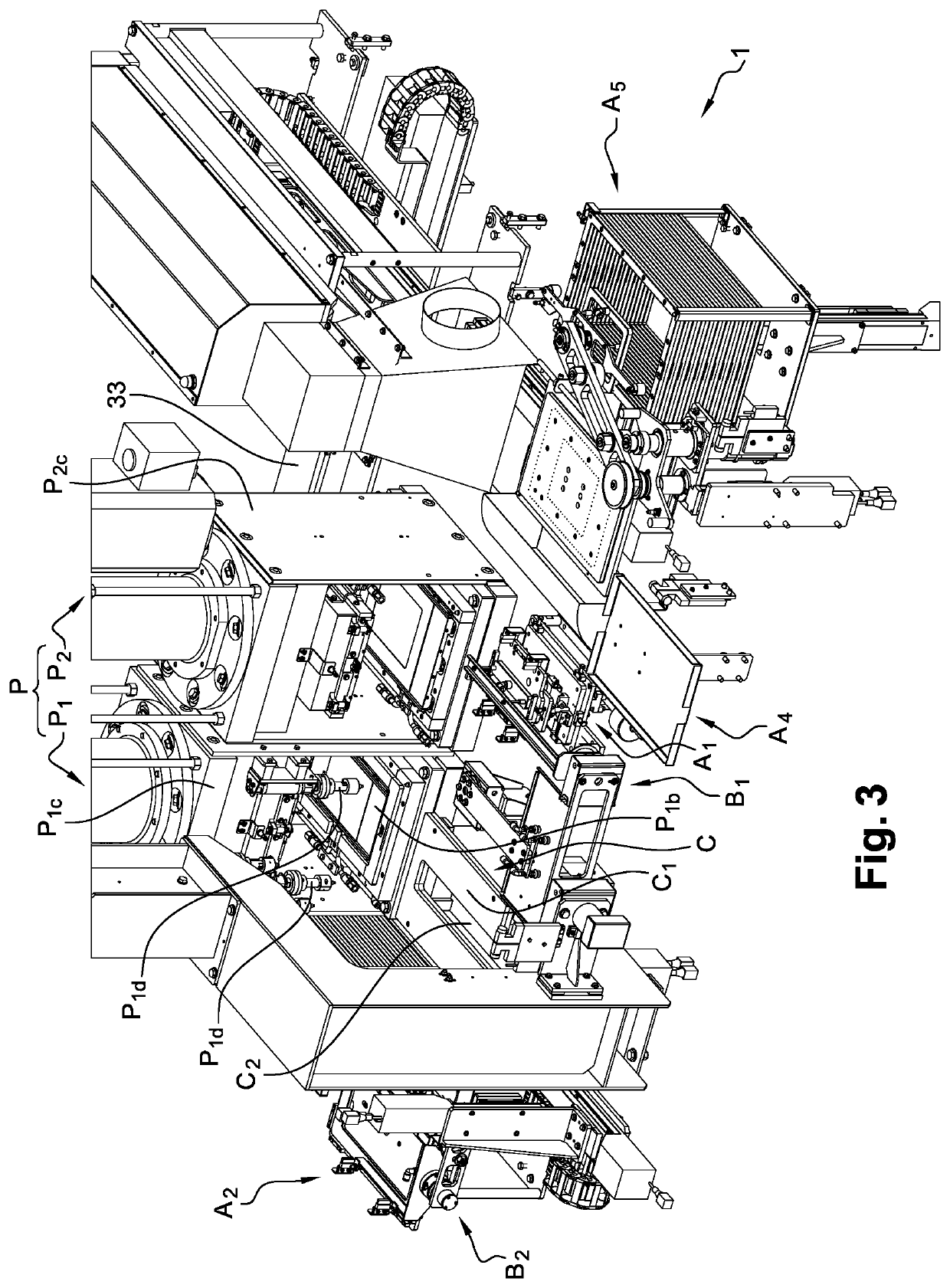Installation for assembling fuel cell membranes
a technology of fuel cell membranes and assembly devices, which is applied in the direction of fuel cells, solid electrolyte fuel cells, electrochemical generators, etc., can solve problems such as difficulty in achieving, and achieve the effect of facilitating the gripping of each membrane by a manipulator
- Summary
- Abstract
- Description
- Claims
- Application Information
AI Technical Summary
Benefits of technology
Problems solved by technology
Method used
Image
Examples
first embodiment
[0149]As shown in FIG. 29, in a tray 47′, the first plate 32′ may comprise a first groove 48′ and a second groove 50′ formed on the second face 44′ of the first plate 32′ and forming independent cooling liquid circulation channels, each channel 48′, 50′ including a liquid inlet 48a′, 50a′ and an outlet 48b′, 50b′ in the tray. The first plate 32′ could still include four fluidly independent channels. In order to allow a good distribution of cold and heat, each of the cooling channel(s) and groove(s) is of the coil type. To obtain a good transfer of frigories in the first plate 32′, it is desirable that the distance along a channel 48′, 50′ from input 48a′, 50a′ of each of the channels 48′, 50a′ to the center of the first plate 32′ is less than the distance along the channel from output 48b′, 50b′ of each of the channels 48′, 50′ to the center of the tray 26′. This promotes a circulation of the liquid to the center and then to the rest of the first plate 32′, which allows a better smo...
second embodiment
[0152]FIGS. 31 and 32 represent a tray 52′ comprising two L-shaped parts 54′, 56′ defining a distinct central portion 58′ between them. Each of the two L-shaped parts 54′, 56′ includes a cooling channel 59′ as described above, the central portion being devoid of a cooling channel and made of a thermally insulating material. The channels 59′ of the parts 54′, 56′ are configured to allow coolant to flow around the central portion and then outwards.
[0153]In this embodiment, only one heating cord could be used (not shown), this one surrounding itself around the central portion 58′ like a spiral. The central portion 58′ is also devoid of any heating means.
[0154]It is easy to understand that the shape of the cooling channels is more critical than that of the heating cords because of the longer time required to reduce the temperature by a given number of degrees using a liquid flow than the time required to increase the temperature by the same number of degrees using a resistive type heati...
PUM
| Property | Measurement | Unit |
|---|---|---|
| Young's modulus | aaaaa | aaaaa |
| Young's modulus | aaaaa | aaaaa |
| thermal conductivity coefficient | aaaaa | aaaaa |
Abstract
Description
Claims
Application Information
 Login to View More
Login to View More - R&D
- Intellectual Property
- Life Sciences
- Materials
- Tech Scout
- Unparalleled Data Quality
- Higher Quality Content
- 60% Fewer Hallucinations
Browse by: Latest US Patents, China's latest patents, Technical Efficacy Thesaurus, Application Domain, Technology Topic, Popular Technical Reports.
© 2025 PatSnap. All rights reserved.Legal|Privacy policy|Modern Slavery Act Transparency Statement|Sitemap|About US| Contact US: help@patsnap.com



